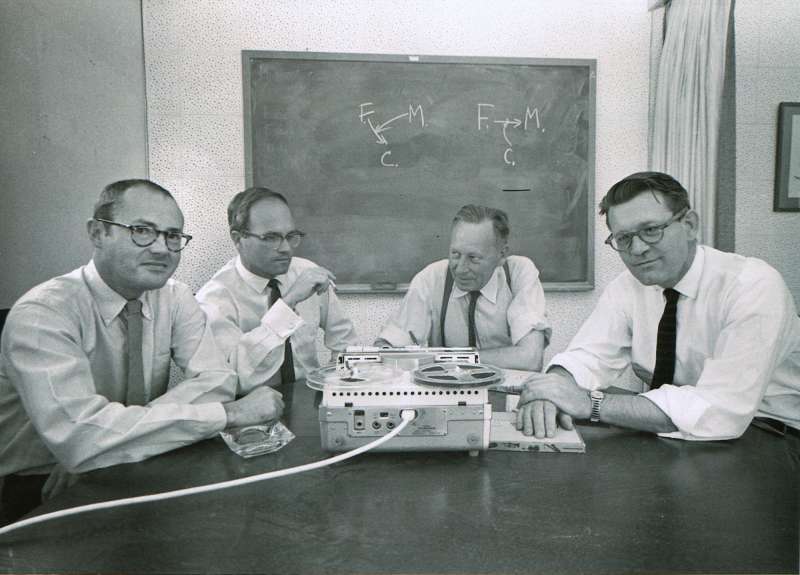Contents
Introduction

Strategic Family Therapy: Techniques, Applications, and Effectiveness
Strategic Family Therapy is a therapeutic approach that focuses on changing patterns of interaction within a family system to resolve problems. This therapy is highly directive, problem-centered, and pragmatic, employing specific strategies and interventions to bring about change in a relatively short period. The therapy seeks to modify the sequences of interactions that sustain dysfunctional behavior, thereby promoting healthier relationships and family dynamics.
The article explores Strategic Family Therapy in detail, from its fundamental principles and core techniques to its application across different psychological conditions. It also considers the therapy’s criticisms and limitations and assesses its overall effectiveness in fostering healthier family relationships and individual mental health.
What is Strategic Family Therapy?
Strategic Family Therapy is a form of psychotherapy that emerged from the work of therapists such as Jay Haley, Cloe Madanes, and Milton Erickson. It is centered on identifying and changing problematic interaction patterns within a family system. Unlike other family therapies that may focus on insight or understanding, Strategic Family Therapy emphasizes taking action and implementing strategies to resolve specific issues.
This approach views the family as a system where each member’s behavior affects and is affected by the others. It focuses on solving problems by altering the interactions and communication patterns that maintain the problems. By strategically intervening in these patterns, therapists aim to shift the family dynamics towards healthier functioning.
Why Strategic Family Therapy is Important?
Strategic Family Therapy is significant because it provides a clear, goal-oriented framework for resolving family issues quickly and effectively. By focusing on specific behaviors and interaction patterns, this approach allows families to address issues pragmatically and make concrete changes. It is particularly beneficial for families dealing with crises, behavioral problems, or entrenched patterns of dysfunction.
The therapy is designed to be brief and focused, making it accessible and practical for many families. It offers a structured approach to problem-solving, helping families develop new ways of interacting that can lead to lasting improvements in their relationships and overall well-being.
Types of Strategic Family Therapy Techniques
- Paradoxical Interventions: These interventions involve prescribing the symptom or instructing clients to engage in the problematic behavior deliberately. The paradox is that by consciously doing what they are unconsciously doing, clients gain awareness and control, often leading to the cessation of the behavior.
- Reframing: This technique involves changing the interpretation of a situation or behavior to create a shift in perception. By altering how family members view a problem, the therapist can help them respond differently and break the cycle of negative interactions.
- Directive Techniques: These are specific tasks or instructions given by the therapist to change family interactions. Directives can be straightforward, such as asking a family member to speak up more in family meetings, or more complex.
- Ordeal Therapy: Developed by Milton Erickson, this technique involves making the symptom more troublesome than the problem itself. For example, if a child refuses to do homework, the therapist might suggest that the child completes extra chores every time they skip their homework.
Understanding How Strategic Family Therapy Works
Strategic Family Therapy works by examining and altering the sequences of interactions within the family to address psychological and behavioral issues. Therapists use a range of techniques to create change, disrupt negative cycles, and promote positive patterns of behavior. These interventions are often creative, tailored to the family’s unique dynamics, and designed to produce rapid results.
Upcoming Section we are breaking it down into three key sections: an overview of its foundational principles, a detailed look at its therapeutic methods, and an assessment of its effectiveness in addressing both psychological and relational challenges.
Simple Overview
Core Idea Strategic Family Therapy centers on identifying and altering problematic interaction patterns within a family system. This approach is directive and action-oriented, focusing on implementing specific strategies and interventions to address and resolve issues. By changing the way family members interact, the therapy aims to promote healthier dynamics and improve overall family functioning. The goal is to create immediate, practical changes that lead to lasting improvements in relationships.
Real-Life Example: Consider a family struggling with a teenager who is acting out and defying rules. The therapist might use a paradoxical intervention by instructing the parents to intentionally encourage and even reward the rebellious behavior. This seemingly counterintuitive approach could lead the teenager to reconsider their actions, as the rebellion no longer provides the expected reward or attention.
Critical Concepts
- Communication Patterns: Strategic Family Therapy emphasizes the importance of communication patterns in maintaining problems. By altering how family members communicate, the therapy aims to disrupt dysfunctional cycles and create healthier interactions. Improving communication can lead to more effective problem-solving and foster a more supportive family environment.
- Family Rules: These are implicit agreements that govern family interactions. Strategic Family Therapy seeks to uncover and alter unspoken rules that contribute to dysfunction, helping families develop more flexible and adaptive rules. Changing these rules can enable family members to respond more effectively to each other’s needs and reduce conflict.
- Feedback Loops: Feedback loops are cycles of behavior that reinforce certain patterns. Strategic Family Therapy focuses on identifying and disrupting these loops to promote healthier behavior. By intervening in these feedback loops, the therapy helps families break repetitive patterns and establish more constructive ways of interacting.
- Hierarchies and Power Dynamics: This concept involves examining the power structures within the family. By shifting these dynamics, the therapy can address issues of control, autonomy, and authority that may be contributing to family problems. Realigning power structures can improve family cohesion and ensure that all members have a voice in decision-making processes.
Detailed Assessment
Strategic Family Therapy integrates various techniques and concepts to provide a highly focused and effective approach to resolving family issues. The therapy is grounded in a systemic perspective and seeks to create change by disrupting problematic interaction patterns and promoting new, healthier behaviors.
- Problem-Focused Approach: Strategic Family Therapy is distinct in its focus on solving specific problems rather than exploring into broader family dynamics. This practical orientation allows therapists to address immediate issues efficiently. By targeting specific behaviors and interaction patterns, the therapy aims to achieve rapid and effective resolution, making it particularly useful in crisis situations or when immediate change is needed.
- Use of Metaphors and Stories: Therapists may use metaphors, stories, or analogies to help family members grasp complex issues in a more accessible and relatable manner. This indirect approach allows therapists to communicate ideas and facilitate insight without triggering defensive reactions. Metaphors and stories can simplify intricate problems and encourage family members to explore new perspectives and solutions.
- Task Assignments: Task assignments are practical directives given to family members to perform specific actions or engage in certain behaviors between therapy sessions. These tasks are designed to interrupt dysfunctional patterns and promote new, constructive behaviors. By assigning tasks that challenge existing interactions and encourage positive change, therapists can help families implement new strategies and reinforce progress outside the therapy sessions.
Difference Between Strategic Family Therapy and Theory
| Aspect | Strategic Family Therapy | Theory |
| Definition | A directive, problem-centered approach focused on altering interaction patterns to resolve issues quickly. | A set of principles or concepts that provides a framework for understanding phenomena or guiding practice. |
| Focus | Specific, actionable interventions aimed at changing behavior patterns within family systems. | Broad, abstract concepts intended to explain or predict phenomena, often without immediate practical application. |
| Goals | To achieve rapid, practical change in family interactions and resolve specific problems. | To provide a general understanding or explanation of concepts, often serving as a foundation for further research or practice. |
| Techniques | Paradoxical interventions, reframing, directives, and ordeals aimed at directly altering problematic behavior. | Varied methods depending on the theory, often including conceptual models, hypotheses, and frameworks for understanding phenomena. |
| Practitioners | Therapists trained in specific strategic techniques and brief therapy models. | Researchers or practitioners who use theoretical frameworks to guide their understanding or practice in various fields. |
| Application | Applied in brief therapy settings to address crises or specific issues quickly. | Theoretical frameworks can be applied across different disciplines to guide research, understanding, or practice. |
| Outcome | Quick resolution of presenting problems and shifts in interaction patterns. | Theoretical outcomes often include insights, predictions, or foundational principles that guide further exploration or application. |
Relationship Between Strategic Family Therapy & Structural Family Therapy
Strategic Family Therapy involves highly directive and action-oriented methods, using specific techniques like paradoxical interventions and task assignments to address and resolve specific behavioral issues swiftly. This approach is pragmatic, with an emphasis on immediate changes in family interactions to solve pressing problems.
Structural Family Therapy, on the other hand, works at a deeper level by modifying the fundamental organization of the family. This includes realigning family roles, establishing clearer boundaries, and adjusting hierarchical structures to promote healthier and more functional family dynamics over the long term.
Despite these differences, both approaches share a commitment to improving family functioning by changing interaction patterns. Strategic Family Therapy uses more direct and sometimes provocative techniques to provoke change, aiming for quick, practical solutions. In contrast, Structural Family Therapy takes a more foundational approach, focusing on restructuring the family’s organization to foster enduring improvements in relational dynamics. Both methods aim to address and resolve family problems by improving communication, roles, and relationships within the family system.
Notable Figures in Strategic Family Therapy

- Jay Haley: A central figure in the development of Strategic Family Therapy, Jay Haley was renowned for his innovative use of directives and paradoxical interventions. He believed that by issuing specific, often counterintuitive instructions, therapists could disrupt dysfunctional patterns within the family system.
- Cloe Madanes: As a co-founder of Strategic Family Therapy, Cloe Madanes played a crucial role in shaping the therapeutic approach with her unique contributions. Her work integrated paradoxical techniques with an understanding of family hierarchies to facilitate change.
- Milton Erickson: A pioneering figure in psychotherapy, Milton Erickson’s innovative techniques in hypnosis and indirect suggestion have profoundly influenced Strategic Family Therapy.
- John Weakland: An influential contributor to Strategic Family Therapy, John Weakland’s work was pivotal in understanding and addressing the communication patterns that perpetuate family problems.
Theories Influenced by Strategic Family Therapy
- Cognitive Behavioral Therapy (CBT): Integrates practical strategies and problem-solving techniques to change dysfunctional thought patterns and behaviors. It utilizes structured, goal-oriented interventions to address and modify negative thinking and maladaptive behaviors.
- Family Systems Therapy: While distinct, it incorporates some strategic techniques to address dysfunctional family dynamics and improve interactions. This approach leverages strategic interventions to enhance understanding and restructuring of family roles and communication patterns.
- Client-Centered Therapy: While more traditionally focused on empathy and understanding, it has incorporated strategic elements to address specific client concerns pragmatically. By integrating strategic techniques, this therapy becomes more adaptable to addressing immediate client needs and practical issues.
- Solution-Focused Brief Therapy: Influenced by the strategic approach, this therapy focuses on finding immediate solutions to present problems rather than exploring underlying issues. It emphasizes identifying and amplifying existing resources and strengths to achieve practical outcomes efficiently.
Applications of Strategic Family Therapy in Treating Mental Health Disorders

Depression
SFT can help individuals with depression by addressing and altering family interactions that may contribute to depressive symptoms. By focusing on practical strategies and behavioral changes, families can create a more supportive environment.
Example: For an individual experiencing depression due to familial criticism, the therapist might use strategic interventions to encourage family members to express appreciation and support in specific ways.
Image Source: opmed.doximity.com

Anxiety Disorders
SFT can be effective in treating anxiety by addressing family roles and interactions that exacerbate anxiety. Techniques like reframing and strategic planning help families develop coping strategies and reduce anxiety-inducing patterns.
Example: An individual with generalized anxiety disorder might experience heightened anxiety during family conflicts. The therapist could work with the family to develop and practice conflict resolution strategies, such as role-playing scenarios where family members practice calm and constructive communication.
Image Source: ananda.ai

Grief and Loss
In cases of grief, SFT helps families navigate the emotional impacts of loss by improving communication and addressing relational changes. The therapy facilitates the expression of grief and strengthens family connections during challenging times.
Example: For a family grieving the loss of a loved one, the therapist might implement strategies to ensure each member has a designated time to share their feelings and memories. This structured approach can help families support one another more effectively and manage the grieving process.
Image Source: overlandparkcounseling.com

Addiction
SFT can address addiction by altering family dynamics that contribute to substance abuse. Techniques such as directives and strategic planning help families support recovery and reduce enabling behaviors.
Example: In cases of substance addiction, the therapist might create a structured plan involving family members agreeing to participate in recovery support activities, such as attending support groups together or establishing clear boundaries regarding financial support. These directives aim to reduce enabling behaviors and foster a supportive environment.
Image Source: additudemag.com
Common Myths About Strategic Family Therapy
| Myth | Fact |
| Strategic Family Therapy is only for short-term problems. | While Strategic Family Therapy is often used for short-term issues, it can also address longer-term relational patterns with ongoing strategies. |
| The therapist controls all aspects of the therapy. | Therapists use specific interventions, but the process is collaborative, with family members actively participating in implementing changes. |
| Strategic Family Therapy relies only on confrontational techniques. | It uses a variety of techniques, including paradoxical interventions and reframing, tailored to the family’s needs and dynamics. |
| The approach does not consider the emotional aspects of family problems. | Although it focuses on behavior and interaction patterns, it also acknowledges and addresses underlying emotional issues as part of the therapeutic process. |
Criticisms of Strategic Family Therapy
- Manipulative Techniques: Critics argue that some strategic interventions, such as paradoxical directives, may be perceived as manipulative or disempowering. These methods involve prescribing the problematic behavior or exaggerating it, which can sometimes lead clients to feel that their autonomy and personal agency are being undermined.
- Limited Insight Development: Strategic Family Therapy primarily focuses on practical problem-solving and behavior modification, which can sometimes limit its effectiveness in providing deep psychological insight. By concentrating on surface-level issues and specific interventions, SFT might not explore the deeper, underlying causes of family problems.
- Risk of Oversimplification: The emphasis on direct behavioral change in Strategic Family Therapy can sometimes lead to the oversimplification of complex family dynamics. By targeting specific issues and applying straightforward solutions, the therapy might not fully account for the intricate emotional and historical layers that contribute to family problems.
Conclusion
Strategic Family Therapy offers a powerful, action-oriented approach to resolving family issues. It has proven effective in various contexts, particularly where quick, pragmatic solutions are needed. However, its reliance on directive and sometimes paradoxical techniques can also be a limitation for families seeking deeper understanding or long-term emotional change. Nevertheless, it remains a valuable tool in the repertoire of family therapists, particularly for addressing specific, behaviorally defined problems.
References
- Haley, J. (1987). Problem-solving therapy. Harper & Row.
- Madanes, C., & Haley, J. (1990). Strategic family therapy. Jossey-Bass.
- Erickson, M. H., & Rossi, E. L. (1981). Hypnotherapy: An exploratory study of the nature and causes of human behavior. John Wiley & Sons.
- Weakland, J. H., Fisch, R., & Segal, L. (1974). The tactics of change: A practical guide to the use of paradoxical interventions. Norton & Company.
- Minuchin, S., & Fishman, H. C. (1981). Family therapy techniques. Harvard University Press.
- Shazer, S., & Berg, I. K. (1995). Familiar systems therapy: A model of change and the role of therapeutic conversation. Guilford Press.
- Rosen, H. (1990). Family therapy: Concepts and methods. Brooks/Cole.
- Liddle, H. A., & Santisteban, D. A. (2011). Family-based treatments for adolescent substance abuse. Cambridge University Press.
- Sexton, T. L., & Whiting, J. B. (1992). Reconstructing family therapy: A critical look at the field. Sage Publications.
- Lebow, J. (2014). Handbook of clinical family therapy. Wiley.
Explore more Theories & Therapies








